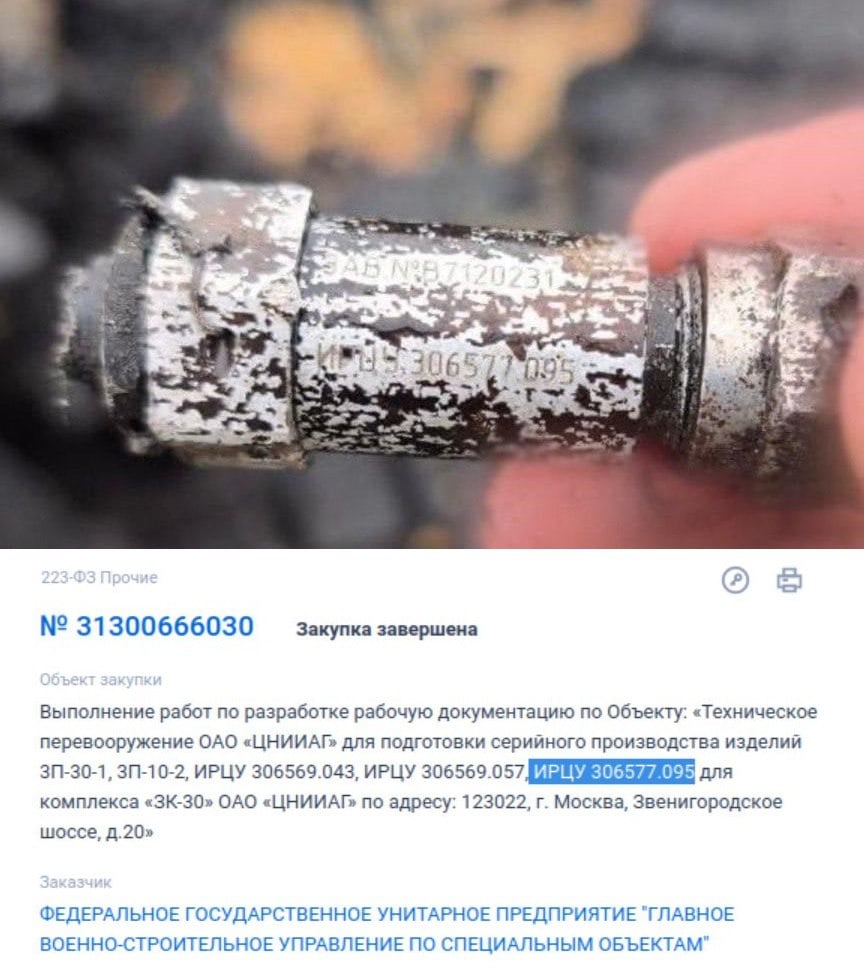
Experts claim that the missile that Russia used to strike the Dnieper on November 21 is far from being the latest technology that it claims to be.
URA-Inform reports this with reference to the “Agency. News”.
Photos of the wreckage, provided by Ukrainian intelligence services and published by CNN, have appeared online. One of the missile fragments has two rows of letters and numbers — these are the serial numbers of the part. Journalist Mark Krutov from Radio Liberty found a 2013 contract on a Russian government procurement website stating that the part was intended for use on the ZK-30 complex, also known as the R-30 Bulava intercontinental ballistic missile.
It was also discovered that the part was manufactured on a Swiss Fehlmann Picomax 54 machine. The marking “IRCU” points to the Central Research Institute of Automation and Hydraulics, and records from the Votkinsk plant, which produces the Topol-M and Yars missiles, indicate an overlap in technologies between the systems. The development of the Bulava began in the 1990s, the first test took place in 2005, and serial production began in 2007.
Krutov suggests that the use of Bulava components in the Oreshnik missile indicates the absence of any truly modern developments or technological advances in it.

Recall that it was previously reported that Putin made one of the most cynical statements during the full-scale war: details.

